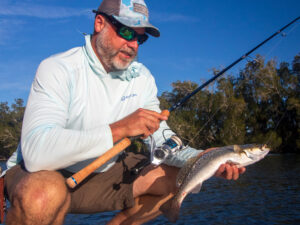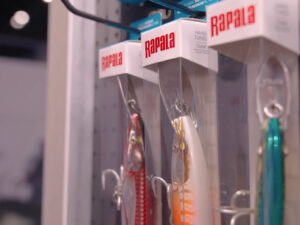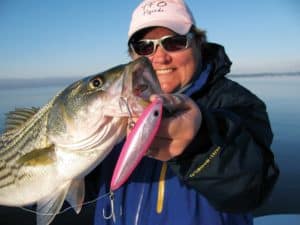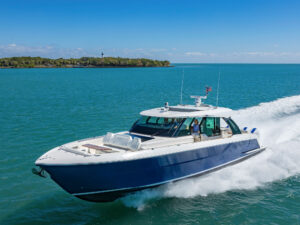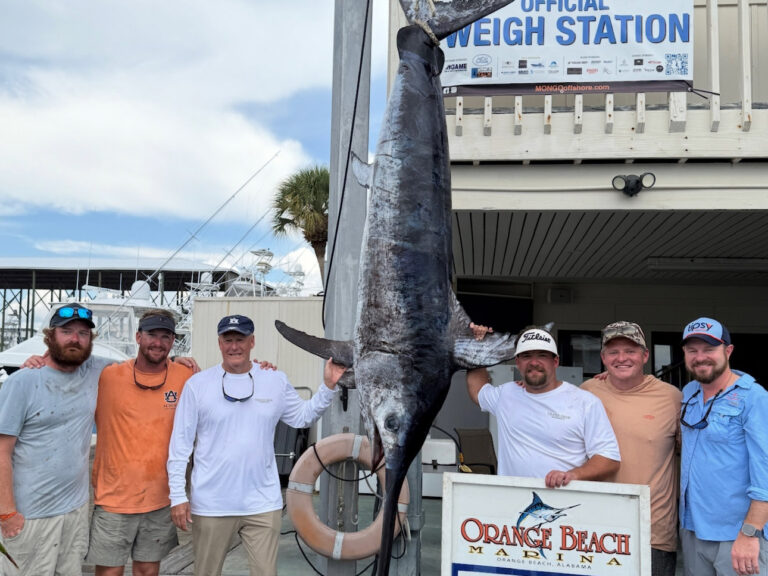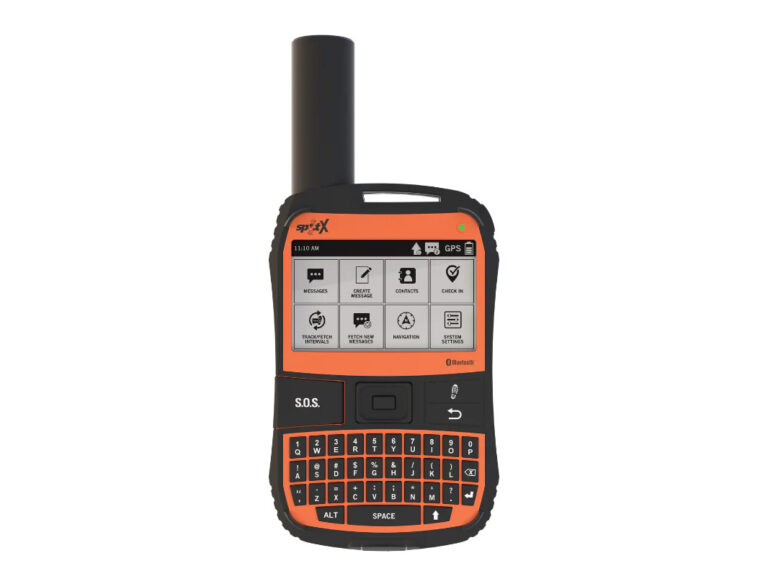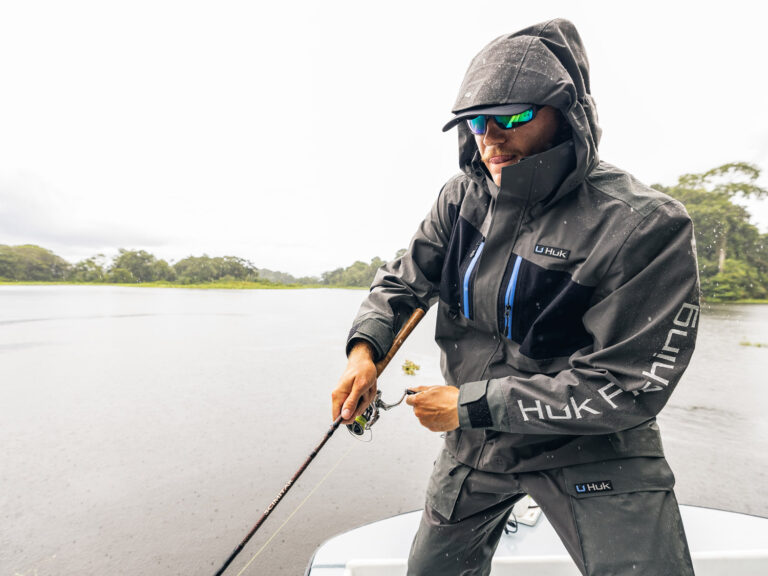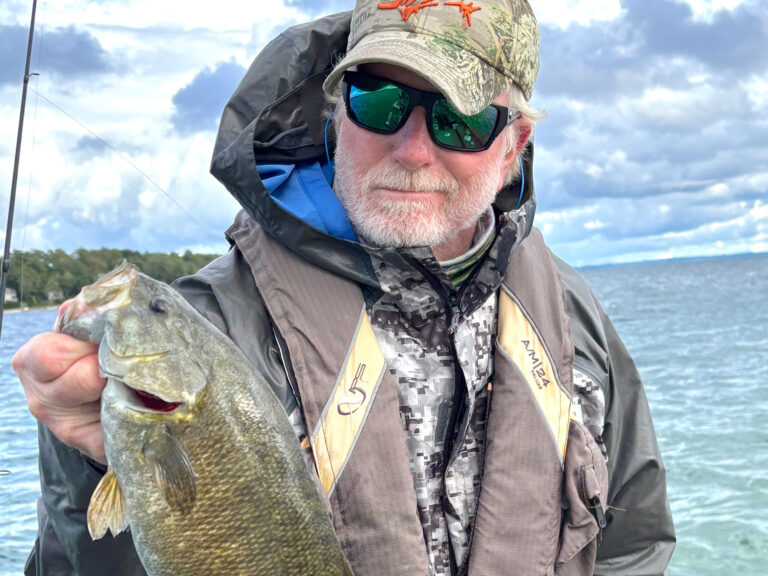
Nowhere does traction take on a more critical role than on the deck of a boat. Without traction, a wet deck becomes a slip and slide, leading to poor footing, spills, injuries and even man-overboard situations.
Most of today’s new center-consoles, bay boats and flats skiffs sport soles using textures such as diamond-pattern or grit-style nonskid, though some boat buyers opt for traditional teak decks or upgrade to an EVA foam nonskid such as SeaDek.
Grip Test
Which type of nonskid offers the best traction? To find out, I built a device that replicates the heaving deck of a boat, but the test was first described in the notes of Renaissance man Leonardo da Vinci (1452-1519).
It is a ramp with which da Vinci could gradually increase the angle of incline until an object began to slip downward. Based on the results of this experiment, da Vinci also defined the mathematical formula for calculating the coefficient of friction.
I used my ramp to determine the relative traction of various common nonskids—both wet and dry—using a new Sperry deck shoe weighted with 11.43 pounds of lead sinkers, for a total weight of 12.35 pounds. Employing an inclinometer, I recorded the angle at which the shoe began to slip. The steeper the angle at which the shoe slipped, the better the traction qualities of the deck material.

Diamond Nonskid
This pattern is one of the most common on new boats today, ranking high among fishermen because it cleans up well after being fouled with tracked-in dirt, slime and such. However, it is tricky to repair if chipped. Some of the more aggressive patterns can stab at bare feet. I used a 2-square-foot sample panel of diamond nonskid provided by Grady-White, which proved comfortable, even on tender tootsies.
It displayed good traction while dry, but it lost a little grip when wet. Most of the water ran off quickly, with the rest collecting in the tiny channels in the pattern, leaving the raised diamonds largely dry and ready to grab.
Grit-Style Nonskid
This gelcoat version of grip tape is found on many boats. Ours was a 2-square-foot sample panel from Grady-White. Chips and scratches can be tricky to fix, but repairs are easier than with diamond nonskid. Some grit patterns tend to retain dirt and can also be painful on bare feet, though Grady’s pattern felt quite comfortable without shoes.
When dry, this surface offered just as much traction as diamond nonskid but lost some grip when wet. While most of the water beaded up and ran off quickly as I increased the angle, the texture retained some water, and I believe this led to the reduced grip in my wet test of this surface.
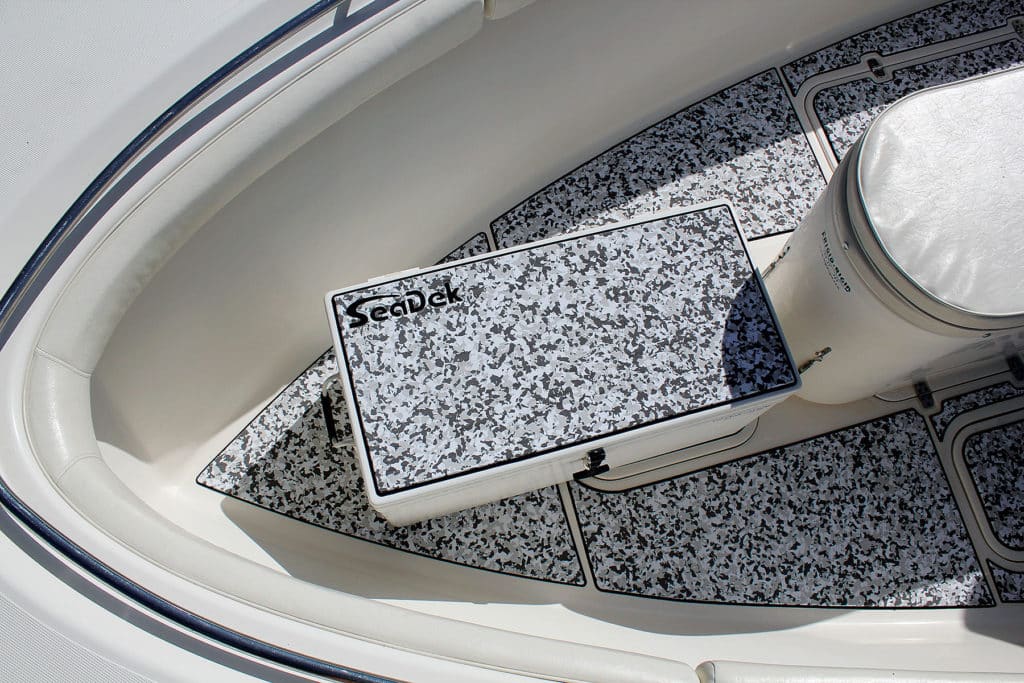
SeaDek Nonskid
This increasingly popular custom-made decking uses machined, stain-resistant, nonabsorbent EVA foam to simulate teak with a bit of cushion. SeaDek needs little maintenance, and a square yard weighs about 12 ounces, much lighter than teak. It is available as a moderately priced option on many new boats, and can be custom‑fitted to older boats.
Dark teaklike colors can get hot, so SeaDek also offers lighter hues such as holly and gray. However, the caulking channels can collect dirt, fish scales and other gunk if not cleaned properly.
For a complete picture, I tested a 2-square-foot piece of new SeaDek two ways—with the grain and across it. The grain and simulated caulking channels are machine-cut. My first test going with the grain proved impressive. SeaDek maintained a strong grip whether dry or wet.
The foam decking material shed almost all of the water immediately as the incline increased, absorbing none of the moisture. Traction was only slightly degraded in the wet test.
Traction improved even further in my tests of SeaDek across the manufactured grain. The edges of caulking grooves, which ran crosswise to the ramp in this trial, may have also contributed to better traction. While the simulated planking shed water quickly, half-inch caulking grooves held pockets of water, which gradually emptied as the ramp angle increased. However, this did not seriously degrade traction.

Teak Decking
Many old-school mariners maintain that teak offers better traction than any modern nonskid. The key is to let it weather, washing it only with salt water. Teak oil ruins its nonskid properties. Untreated, it will turn gray, and some find this aesthetically unappealing. Available as a pricey option on a number of custom-built boats today, teak decking is heavy and susceptible to stains from oil, fish blood and squid ink.
As with SeaDek, I traction-tested the untreated teak plank both with and across the grain. In testing with the shoe placed parallel to the grain, teak lives up to its old-school reputation for grip. It offered better traction than both types of the fiberglass textures in my comparison. However, with a damp deck, you can’t count on the same grip. Still, even when wet, teak offers the same degree of traction as either fiberglass nonskid.
Read Next: EVA Foam Decks: New Nonskid for Fishing Boats
When tested across the grain, the teak plank offered impressive traction when dry. Surprisingly, it was the only surface that became more grippy when wet. I believe this is because moisture raises the grain of the wood, creating cross-ridges of nonskid, lending credence to the salty assertion that teak makes for one of the best nonskid surfaces. But there is one better.

Safety-Walk 700 Grip Tape
Grip tape is used on some aluminum boats as nonskid material, and so I decided to include it in this comparison. Safety-Walk 700 series 4-inch-wide tread from 3M, which is akin to coarse sandpaper, is tough on bare feet and a questionable choice from an aesthetics point of view. The black tape gets hot, but cooler white is available in a less-aggressive tread.
Safety-Walk 700 was created to provide the best traction possible—largely for industrial applications. Indeed, my tests indicate that this is the case. More popular among skateboarders than boaters, this material offered extremely good traction. Even wet, it had better grip than any other nonskid in the group. Available in a variety of widths and lengths, this peel-and-stick material is easy to apply. However, the tape begins to peel up at the corners after a year or two of use, requiring replacement.

